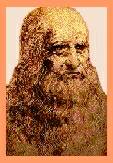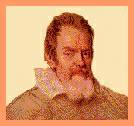|
PinkMonkey Online Study Guide-World History
Painting
The change in painting was even more striking than in sculpture. Before the 16th century, most of the paintings were frescoes, that is pictures made directly on plaster walls, or on wooden panels. However in the 16th century, easel painting, detached pictures on canvas, wood or other materials developed, while the art of oil painting was mastered. Painting could not be inspired by classical pagan models, which had perished.
Thus it was more original, and thoroughly Christian. Four of the world’s greatest painters namely Leonardo da Vinci, Michelangelo, Raphael and Titian flourished in Italy during the 16th century.

Exhibit 2.5
Leonardo da Vinci
Leonardo da Vinci, was a scientific painter who carefully studied the human body and the problems of perspective and mastered the values of light, shade and color. Among his well-known works is the " Mona Lisa" now in the Louvre at Paris, and "The Last Supper" a fresco in Milan. Leonardo was indeed a versatile genius. Doing the job of an engineer, he constructed a canal in north Italy as well as fortifications around Milan. He was also a musician, philosopher, writer and an ingenious craftsmen, who could be considered as the ideal of the Renaissance Age. He can be considered to have been the "complete" man, interested in all branches of culture.
Michelangelo was a painter of the first rank whose ceiling
frescoes in the Sistine chapel of the Vatican are famous marvels.
His most excellent painting is his grand fresco of ’The Last Judgement’
in the same chapel. He was also a matchless sculptor, a great architect,
an eminent engineer and a charming poet.
Sanzio Raphael became immortal through his "divine" portraits. Thus his Sistine ’Madonna’ is regarded as a landmark in portrait painting, owing to its lifelike charm and beauty of composition.
The chief representative of the Venetian school of painting, was Tiziano Vecelli, also known Titian, the official painter for the city of Venice. The pictures of this school were famous for bright mosaic color patterns. Other artists belonging to this school were the "Bellinis, Mantegna, Giorgione and Tintoretto who became famous for their secular bright colored portraits and landscapes.
The "new painting" soon spread from Italy to become the heritage of all Western Europe. Francis I took Italian painters to France where they trained French painters. Philip II encouraged painting in Spain where Velasquez, Rubens, Van Dyck and Murillo distinguished themselves. Holbein and Durer painted magnificently in Germany. However Durer grew more famous as an engraver and wood carver, whose greatest engravings were "The Knight and Death" and "St. Jerome in His Study".
Music
The golden age of Renaissance music began in the 16th century, when the crude musical instruments of the Middle Age took on modern forms and sweeter tones. The harsh rebeck was replaced by the violin, which rose in prominence, while the harpsichord foretold the piano. The Roman school of music produced the master composer Palestrina who is rightly called the "father of modern church music". His style was officially recognized by the Council of Trent (1545-63) other great musicians were Josquin Des Prez, Adrian Willaert and Giovanni Gabrieli of Venice.
In England some of the great composers were William Byrd, Thomas Morley and John Wilbye, while in Germany Orlandus de Lassus created several compositions.
Science
The spirits of inquiry created by the Renaissance movement led to great progress in science. Scientists such as Peter Abelard, Abertus Magus, Thomas Aquinas and Roger Bacon during the middle age itself based their arguments on reason. In the 13th century, Roger Bacon laid the foundations of modern science, by insisting on the experimental method, and discovered the uses of gunpowder and the magnifying lens.
Nicholas Copernicus of Poland revolutionized the thought of mankind by proving that the earth moves round the sun. Thus his study of movement of heavenly bodies proved that the theory of Ptolemy, the Greek astronomer of Egypt was incorrect, for Ptolemy had stated that the earth is the center round which the sun and other bodies move. The Copernican theory was upheld by the Italian astronomer Galileo, and the German astronomer John Kepler.
John Kepler improved upon the Copernican theory by showing that the planets go round the Sun in an elliptical orbit, rather than in a circle as affirmed by Copernicus initially.

Exhibit 2.6
Galileo
Galileo popularized the Copernican theory, for which he was punished by the church. However, he made important advances in physics through experiments and observations. By throwing weights from the leaning tower of Pisa, he discovered that the speed of a falling body depends upon the distance it falls, rather than upon its weight. A swinging lamp in the cathedral of Pisa helped him to discover the laws of the Pendulum. He also perfected the telescope and invented a thermometer.
Sir Isaac Newton discovered the laws of gravitation, governing the movements of the planets round the sun, as also that of the moon round the earth.
The age of Renaissance also witnessed several inventions and discoveries such as that of the printing press which was of immense importance. The invention of the printing press with movable types during the 15th century greatly helped the diffusion of knowledge. The discovery of the uses of gunpowder brought an end to feudalism by giving the Kings of Europe an instrument for destroying the baronial castles and for bringing the manorial lords under their control. The invention of the mariner’s compass helped in the progress of foreign trade. Thus the foundations of modern science were firmly laid in the age of the Renaissance.
[next
page]
|